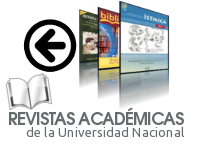Impact of Bilateral and Unilateral Exercises on Acute Enhancement of Horizontal Jump Performance in Professional Soccer Players
DOI:
https://doi.org/10.15359/21.1.17521Keywords:
Athletic performance, exercise, soccer, warm-up exerciseAbstract
Objective: To analyze the effect of activation through bilateral or unilateral strength and plyometric exercises on horizontal jump performance. Methodology: The study involved 15 highly trained male soccer players (age, 24.7 ± 3.1 years; height, 181.2 ± 4.7 cm; weight, 79.7 ± 3.4 kg) from the same team competing in the national league. Their regular training routine consisted of 4 sessions and 1 competitive match per week. Participants performed 1 control protocol (CON) and 3 activation protocols following a counterbalanced design based on specific soccer exercises (SIN), bilateral (BIL), and unilateral (UNI) strength and plyometric exercises. After each protocol, players underwent the horizontal jump test (HZB). Results: The repeated measures ANOVA revealed significant positive effects on HZB for the SIN (p<0.01; diff = 2.95(2.00) %), BIL(p<0.01; diff = 3.22(2.61) %), and UNI (p<0.01; diff = 6.80(3.40) %) protocols compared to CON. Furthermore, HZB was significantly higher after the UNI protocol than after SIN (p<0.01; diff = 3.74(2.62) %) and BIL (p<0.01; diff = 3.47(1.94) %). Individual response analysis reflected positive effects on HZB for SIN, BIL, and UNI compared to CON, while 89 % of players showed better HZB performance after UNI than after BIL. Conclusions: Activation incorporating unilateral strength and plyometric stimuli has a greater positive effect on horizontal jump capacity than activation involving general, soccer-specific, and bilateral exercises.
References
Andrews, S. K., Horodyski, J. M., Macleod, D. A., Whitten, J., & Behm, D. G. (2016). The interaction of fatigue and potentiation following an acute bout of unilateral squats. Journal of Sports Science and Medicine, 15(4), 625–632. PMID: 27928208
Boullosa, D. (2021). Post-activation performance enhancement strategies in sport: a brief review for practitioners. Human Movement, 22(3), 101–109. https://doi.org/10.5114/hm.2021.103280
Boullosa, D., Beato, M., Iacono, A. Dello, Cuenca-Fernández, F., Doma, K., Schumann, M., Zagatto, A. M., Loturco, I., & Behm, D. G. (2020). A new taxonomy for postactivation potentiation in sport. International Journal of Sports Physiology and Performance, 15(8), 1197–1200. https://doi.org/10.1123/IJSPP.2020-0350
Bourdon, P., Cardinale, M., Murray, A., Gastin, P., Kellmann, M., Varley, M. C., Gabbett, T., Coutts, A. J., Burgess, D. J., Gregson, W., & Cable, N. T. (2017). Monitoring Athlete Training Loads: Consensus Statement. International Journal of Sport and Exercise Psychology, 12, 161–170. https://doi.org/10.1123/IJSPP.2017-0208
Cohen J. (1988). Statistical power analysis for the behavioral sciences, (2nd ed.). Hillsdale, NJ: Erlbaum Associates.
Crossley, K. M., Patterson, B. E., Culvenor, A. G., Bruder, A. M., Mosler, A. B., & Mentiplay, B. F. (2020). Making football safer for women: A systematic review and meta-Analysis of injury prevention programs in 11 773 female football (soccer) players. In British Journal of Sports Medicine (Vol. 54, Issue 18, pp. 1089–1098). BMJ Publishing Group. https://doi.org/10.1136/bjsports-2019-101587
Cuenca-Fernández, F., Smith, I., Jordan, M., Macintosh, B., López-Contreras, G., Arellano, R., & Herzog, W. (2017). Non-localized postactivation performance enhancement (PAPE) effects in trained athletes: a pilot study. Applied Physiology, Nutrion, and Metabolism, 42(10), 1–13. https://doi.org/10.1139/apnm-2017-0217
Delgado-Bordonau, J., & Méndez-Villanueva, A. (2012). Tactical periodization: Mourinho’s best-kept secret. Soccer NSCAA Journal, 3, 28–34.
Escobar Hincapié, A., Agudelo Velásquez, C. A., Ortiz Uribe, M., García Torres, C. A., & Rojas Jaramillo, A. (2021). Unilateral and Bilateral Post-Activation Performance Enhancement on Jump Performance and Agility. International Journal of Environmental Research and Public Health, 18(19). https://doi.org/10.3390/ijerph181910154
Ghahremani, R., & Nazem, F. (2014). The acute effects of unilateral and bilateral squat on vertical jumping functional and electromyographic indexes in athlete men. Journal of Sport in Biomotor Sciences, 6, 27-36. http://journals.hsu.ac.ir/sbs/article1-280-en.html&sw
Gouvêa, A. L., Fernandes, I. A., César, E. P., Silva, W. A. B., & Gomes, P. S. C. (2013). The effects of rest intervals on jumping performance: a meta-analysis on post-activation potentiation studies. Journal of Sports Sciences, 31(5), 459–467. https://doi.org/10.1080/02640414.2012.738924
Hamada, T., Sale, D. G., Macdougall, J. D., & Tarnopolsky, M. A. (2000). Postactivation potentiation, fiber type, and twitch contraction time in human knee extensor muscles. J Appl Physiol, 88, 2131–2137. https://doi.org/10.1152/jappl.2000.88.6.2131
Hammami, A., Zois, J., Slimani, M., Russel, M., & Bouhlel, E. (2018). The efficacy, and characteristics, of warm-up and re-warm-up practices in soccer players: a systematic review. The Journal of Sports Medicine and Physical Fitness, 58(1–2), 135–149. https://doi.org/10.23736/S0022-4707.16.06806-7
Hodgson, M., Docherty, D., & Robbins, D. (2005). Post-activation potentiation: Underlying physiology and implications for motor performance. Sports Medicine, 35(7), 585–595. https://doi.org/10.2165/00007256-200535070-00004
Jones, P., & Lees, A. (2003). A biomechanical analysis of the acute effects of complex training using lower limb exercises. Journal of Strength & Conditioning Research, 17(4), 694–700. https://doi.org/10.1519/00124278-200311000-00011
Lago, C., Casais, L., Dominguez, E., & Sampaio, J. (2010). The effects of situational variables on distance covered at various speeds in elite soccer. European Journal of Sport Science, 10(2), 103–109. https://doi.org/10.1080/17461390903273994
Loturco, I., Contreras, B., Kobal, R., Fernandes, V., Moura, N., Siqueira, F., Winckler, C., Suchomel, T., & Pereira, L. A. (2018). Vertically and horizontally directed muscle power exercises: Relationships with top-level sprint performance. PLoS ONE, 13(7), 1–13. https://doi.org/10.1371/journal.pone.0201475
Mallo, J., Mena, E., Nevado, F., & Paredes, V. (2015). Physical Demands of Top-Class Soccer Friendly Matches in Relation to a Playing Position Using Global Positioning System Technology. Journal of Human Kinetics, 47(1), 179–188. https://doi.org/10.1515/hukin-2015-0073
Maroto-Izquierdo, S., Bautista, I. J., & Rivera, F. M. (2020). Post-activation performance enhancement (PAPE) after a single bout of high-intensity flywheel resistance training. Biology of Sport, 37(4), 343–350. https://doi.org/10.5114/BIOLSPORT.2020.96318
McCurdy, K. W., Langford, G. A., Doscher, M. W., Wiley, L. P., & Mallard, K. G. (2005). The effects of short-term unilateral and bilateral lower-body resistance training on measures of strength and power. Journal of Strength and Conditioning Research, 19(1), 9–15. https://doi.org/10.1519/00124278-200502000-00003
McKay, A. K. A., Stellingwerff, T., Smith, E.S., Martin, D. T., Mujika, I., Goosey-Tolfrey, V.L., et al. (2022). Defining training and performance caliber: a participant classification framework. International Journal of Sports Physiology and Performance, 17(2), 317-331. https://doi.org/10.1123/ijspp.2021-0451
Mujika, I., Halson, S., Burke, L. M., Balagué, G., & Farrow, D. (2018). An integrated, multifactorial approach to periodization for optimal performance in individual and team sports. International Journal of Sports Physiology and Performance, 13, 538–561. https://doi.org/10.1123/ijspp.2018-0093
Noyes, F. R., Barber, S. D., & Mangine, R. E. (1991). Abnormal lower limb symmetry determined by function hop tests after anterior cruciate ligament rupture. The American Journal of Sports Medicine, 19(5), 513–518. https://doi.org/10.1177/036354659101900518
Oliva-Lozano, J. M., Fortes, V., Krustrup, P., & Muyor, J. M. (2020). Acceleration and sprint profiles of professional male football players in relation to playing position. PLoS ONE, 15(8 August). https://doi.org/10.1371/journal.pone.0236959
Petisco, C., Ramirez-Campillo, R., Hernández, D., Gonzalo-Skok, O., Nakamura, F. Y., & Sanchez-Sanchez, J. (2019). Post-activation Potentiation: Effects of Different Conditioning Intensities on Measures of Physical Fitness in Male Young Professional Soccer Players. Frontiers in Psychology, 10(June), 1–9. https://doi.org/10.3389/fpsyg.2019.01167
Pons, E., Ponce-Bordón, J. C., Díaz-García, J., del Campo, R. L., Resta, R., Peirau, X., & García-Calvo, T. (2021). A longitudinal exploration of match running performance during a football match in the spanish la liga: A four-season study. International Journal of Environmental Research and Public Health, 18(3), 1–10. https://doi.org/10.3390/ijerph18031133
Ramírez-Campillo, R., Sanchez-Sanchez, J., Gonzalo-Skok, O., Rodríguez-Fernández, A., Carretero, M., & Nakamura, F. Y. (2018). Specific Changes in Young Soccer Player’s Fitness After Traditional Bilateral vs. Unilateral Combined Strength and Plyometric Training. Frontiers in Physiology, 9(March), 1–10. https://doi.org/10.3389/fphys.2018.00265
Raya-González, J., & Sanchez-Sanchez, J. (2018). Strength training methods for improving actions in football. Apunts. Educación Física y Deportes, 132, 72–93. https://doi.org/10.5672/apunts.2014-0983.es.(2018/2).132.06
Rey, E., Lago-Peñas, C., Lago-Ballesteros, J., Casais, L., & Dellal, a. (2010). The effect of a congested fixture period on the activity of elite soccer players. Biology of Sport, 27, 181–185. https://doi.org/10.5604/20831862.919337
Rösch, D., Hodgson, R., Peterson, L., Graf-Baumann, T., Junge, A., Chomiak, J., & Dvorak, J. (2000). Assessment and evaluation of football performance. American Journal of Sports Medicine, 28(5), 29–39. https://doi.org/10.1177/28.suppl_5.s-29
Sanchez-Sanchez, J., Hernández, D., Martin, V., Sanchez, M., Casamichana, D., Rodríguez-Fernández, A., Ramirez-Campillo, R., & Nakamura, F. Y. (2019). Assessment of the external load of amateur soccer players during four consecutive training microcycles in relation to the external load during the official match. 25. Motriz. Revista de Educaçao Física, 25(1), e101938. https://doi.org/10.1590/s1980-65742019000010014
Sanchez-Sanchez, J., Rodríguez, A., Petisco, C., Ramirez-Campillo, R., Martínez, C., & Nakamura, F. Y. (2018). Effects of Different Post-Activation Potentiation Warm-Ups on Repeated Sprint Ability in Soccer Players from Different Competitive Levels. Journal of Human Kinetics, 61(1). https://doi.org/10.1515/hukin-2017-0131
San-Millán, I., Hill, J. C., & Calleja-González, J. (2020). Indirect assessment of skeletal muscle glycogen content in professional soccer players before and after a match through a non-invasive ultrasound technology. Nutrients, 12(4). https://doi.org/10.3390/nu12040971
Scott, S. L., & Docherty, D. (2004). Acute effects of heavy preloading on vertical and horizontal jump performance. Journal of Strength & Conditioning Research, 18(2), 201–205. https://doi.org/10.1519/R-13123.1
Seitz, L. B., & Haff, G. G. (2016). Factors Modulating Post-Activation Potentiation of Jump, Sprint, Throw, and Upper-Body Ballistic Performances: A Systematic Review with Meta-Analysis. Sports Medicine, 46(2), 231–240. https://doi.org/10.1007/s40279-015-0415-7
Seitz, L. B., Mina, M. A., & Haff, G. G. (2017). A sled push stimulus potentiates subsequent 20-m sprint performance. Journal of Science and Medicine in Sport, 20, 781–785. https://doi.org/10.1016/j.jsams.2016.12.074
Stølen, T., Chamari, K., Castagna, C., & Wisløff, U. (2005). Physiology of Soccer an Update. In Sports Med (Vol. 35, Issue 6). https://doi.org/10.2165/00007256-200535060-00004
Thapa, R., Clemente, F., Moran, J., Garcia-Pinillos, F., T. Scanlan, A., & Ramirez-Campillo, R. (2023). Warm-up optimization in amateur male soccer players: A comparison of small-sided games and traditional warm-up routines on physical fitness qualities. Biology of Sport, 40(1), 321–329. https://doi.org/10.5114/biolsport.2023.114286
Titton, A., & Franchini, E. (2017). Postactivation potentiation in elite young soccer players. Journal of Exercise Rehabilitation, 13(2), 153–159. https://doi.org/10.12965/jer.1734912.456
Tsurubami, R., Oba, K., Samukawa, M., Takizawa, K., Chiba, I., Yamanaka, M., & Tohyama, H. (2020). Warm-up intensity and time course effects on jump performance. Journal of Sports Science and Medicine, 19(4), 714–720. https://www.jssm.org/jssm-19-714.xml%3EFulltext
Wilson, J. M., Duncan, N. M., Marin, P. J., Brown, L. E., Loenneke, J. P., Wilson, S., Jo, E., Lowery, R. P., & Ugrinowitsch, C. (2013). Meta-Analysis of postactivation potentiation and power: effects of conditioning activity, volume, gender, rest periods, and training status. Journal of Strength & Conditioning Research, 27(3), 854–859. https://doi.org/10.1519/JSC.0b013e31825c2bdb
Zois, J., Bishop, D., & Aughey, R. (2015). High-intensity warm-ups: effects during subsequent intermittent exercise. International Journal of Sport Physiology and Performance, 10(4), 498–503. https://doi.org/10.1123/ijspp.2014-0338
Zois, J., Bishop, D. J., Ball, K., & Aughey, R. J. (2011). High-intensity warm-ups elicit superior performance to a current soccer warm-up routine. Journal of Science and Medicine in Sport, 14(6), 522–528. https://doi.org/10.1016/j.jsams.2011.03.012
Downloads
Published
How to Cite
Issue
Section
License
Copyright (c) 2024 MHSalud: Revista en Ciencias del Movimiento Humano y Salud

This work is licensed under a Creative Commons Attribution-NonCommercial-NoDerivatives 3.0 Unported License.
General conditions
MHSalud: Journal in Human Movement Sciences and Health by the Universidad Nacional is cover under a Creative Commons Atribución-NoComercial-SinDerivadas 3.0 Costa Rica license.
The journal is hosted in open access repositories such as the Institutional Repository of the Universidad Nacional, the Kimuk Repository of Costa Rica and La Referencia.
The editorial source of the journal must be recognized. Use the doi identifier for this purpose.
Self-archiving policy: The journal allows the self-archiving of the articles in their peer-reviewed version, edited and approved by the Editorial Board of the Journal to be available in Open Access through the Internet. More information in the following link: https://v2.sherpa.ac.uk/id/publication/25815



















